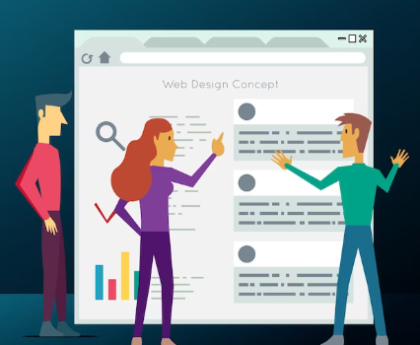Front-end development is a crucial aspect of web development that focuses on creating the visual and interactive elements of a website that users directly interact with. It encompasses the design, layout, and functionality that users see and engage with when they visit a website.
At its core, front-end development involves three main technologies: HTML (Hypertext Markup Language), CSS (Cascading Style Sheets), and JavaScript. HTML provides the structure and content of a webpage, CSS is responsible for styling and layout, and JavaScript adds interactivity and dynamic behavior.
HTML is the foundation of any web page. It structures the content, such as headings, paragraphs, images, and links, in a way that browsers can understand. CSS complements HTML by controlling the presentation and layout of these elements. It allows developers to define colors, fonts, spacing, and responsive designs, ensuring a visually appealing and consistent user experience across different devices and screen sizes.
JavaScript, often referred to as the “programming language of the web,” brings life to web pages. It enables developers to create interactive features like image sliders, form validation, and real-time updates. With JavaScript frameworks and libraries like React, Angular, and Vue.js, developers can build complex single-page applications (SPAs) with smoother user interactions and seamless navigation.
Front-end developers collaborate closely with UI/UX designers to ensure that the user interface (UI) is visually appealing, intuitive to navigate, and user-friendly. They transform design mockups into functioning web pages, optimizing for performance and responsiveness. This involves optimizing images, minimizing code, and implementing techniques to improve loading times.
Responsive web design is a critical consideration in front-end development. As users access websites on various devices, from smartphones to desktops, front-end developers use techniques like media queries to adapt the layout and design to different screen sizes, ensuring a consistent and enjoyable experience for all users.
Front-end development has evolved significantly over the years, with advancements in technologies and tools. Developers now have access to pre-designed UI components, CSS frameworks, and development environments that streamline the coding process and improve efficiency.
In conclusion, front-end development is responsible for creating the visual and interactive aspects of a website, encompassing HTML, CSS, and JavaScript. It collaborates closely with UI/UX design to deliver an engaging and user-friendly experience. With a focus on responsiveness, interactivity, and aesthetics, front-end developers play a vital role in shaping the way users interact with and perceive websites on the internet.





